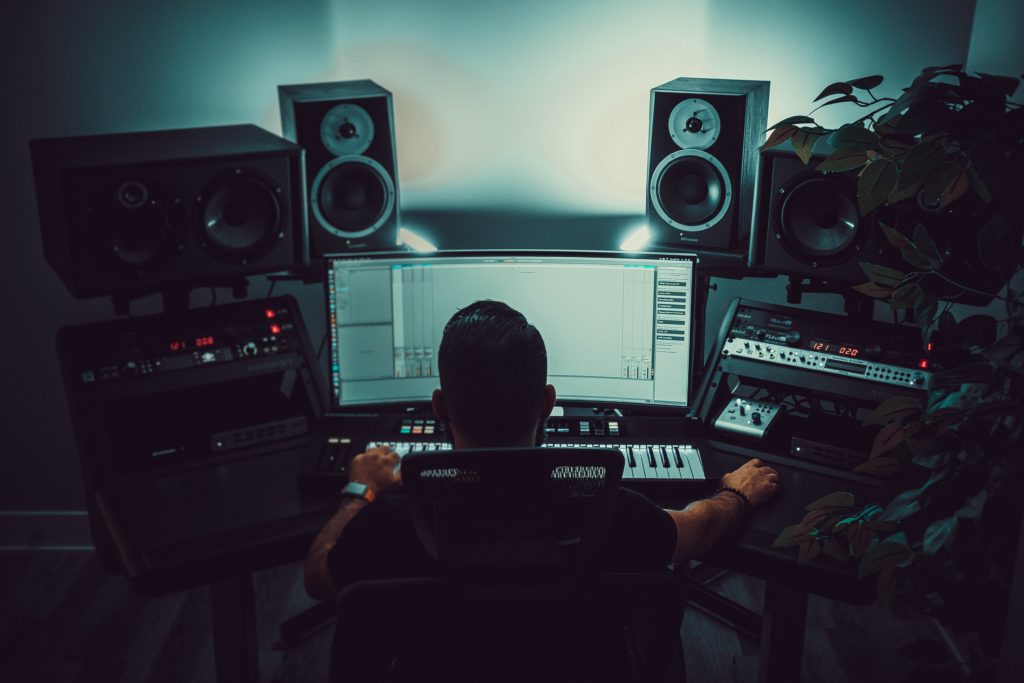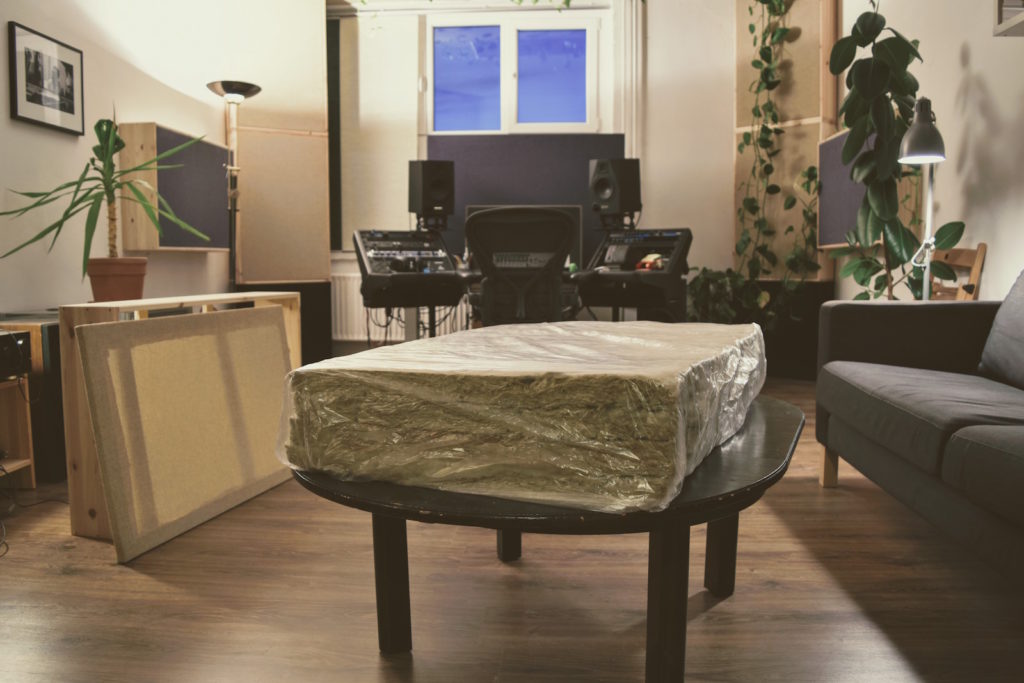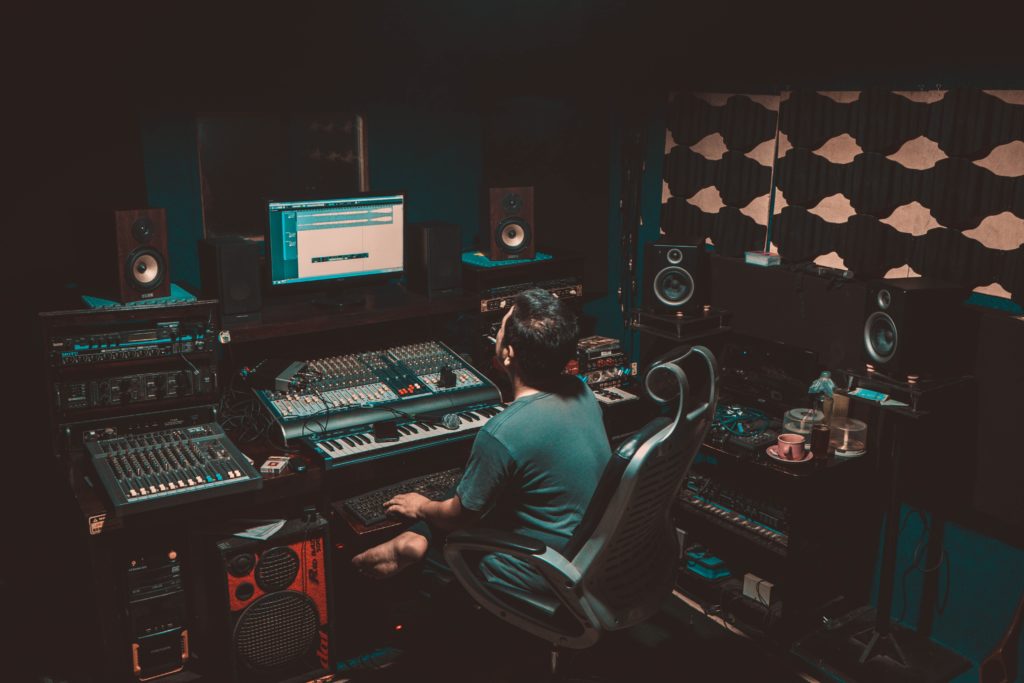As is true with many things in life, you can spend days, months, even years researching and preparing information on a certain topic, but the most valuable lessons are always learned once you dive in headfirst and go through it yourself. In my opinion (and experience) creating a music home studio fits this descriptor to a tee. After 5 years of being a music producer, I only recently completed my very first “proper” home studio. This process involved a lot of trial and error and was an incredible learning opportunity, so I’d love to share some of the accumulated knowledge.
This article aims to spare you most of the technical voodoo and take a closer, more philosophical and long-term look at what you rarely hear, but definitely shouldn’t be overlooked when building your first music studio. If you’re a music producer who has some experience already, this article will hopefully shed a light on what to look out for when taking this big step forward in your music creation journey. Let’s dive right in.

Chapter One: The room, surroundings, accessibility
OK, maybe not a shocker of a start to our one-sided discussion, but you have to admit it - a necessary one. The room in which you’re planning to host your studio is the most important piece of the puzzle since it’s going to dictate your decisions onward. I want to preface this and say that while I’ll often be referring to “building” a studio, I don’t necessarily mean constructing a building or a room from the ground up. Although that’d be the perfect scenario, because you’ll have control over the dimensions and specifications of the construction, most of us don’t have that luxury and need to settle with a pre-existing room. Using a spare bedroom or being able to rent/buy a room is a great start. Аvoid cube-shaped ones, by the way. I know I said I’ll strain from including much technical advice, but I can’t help myself. Square rooms usually introduce resonance buildup, frequency cancelation and other unpleasant problems.
Once you’ve chosen a room, now is a perfect time to consider factors like surroundings, accessibility and the general situation. If your room doesn’t have any soundproofing implemented in the walls (not to be mistaken with acoustic treatment, which we’ll get into later), think about who is nearby: Are you living with anyone who you might bother with your music production? Are there facilities producing noise nearby that could distract you from your work? What does the window/air conditioning situation look like? How easy is it for you to get to your studio? Is the surrounding environment predisposing to creative work?
I know that these questions might seem extremely abstract and useless at first, but I really encourage you to answer them early on. Being aware of what problems or limitations you’re dealing with from the beginning will help you envision your priorities down the line. The worst possible outcome of rushing a project like this is finally being able to create music in your new space and realizing that a stupid little issue could’ve been avoided by some more careful planning. I’m unfortunately speaking from experience here, so I hope you take my word for it. Answering those questions will also give you a general idea of what compromises should be made for the optimum result. And yes, you guessed it - making compromises will, unfortunately, be the key point of this whole experience.
Stay up to date.
New music and exclusive updates in your inbox weekly.
Acoustic Treatment: Commercial or DIY Acoustic Panels
Speaking of compromises, let’s address the elephant in the room… Pun intended. Hearing the sound of your speakers as accurately as possible is key to making adequate decisions about what something should sound like. The fact of the matter is that reflections, created by the walls or objects in your room, have a direct impact on what you’re experiencing as a listener. The main goal of the acoustic treatment is to eliminate the “sound” of the room as a factor (in the realms of possibility, priority and compromise, of course).
When thinking about acoustically treating a studio people usually consider two possible routes: do I just buy acoustic panels, or build them myself? As is with many questions, the answer is (drumroll please) “it depends”. I really don’t want to get into the age-old debate of which option is better, since they are both so different in their own right:
Store-bought acoustic panels are usually expensive (the ones that actually do a decent job), but it’s easy to just buy them and not worry about it. DIY acoustic panels made from mineral wool, on the other hand, can be a pain to build on your own, if you don't consider yourself very handy, but are usually cheaper and more effective (have you seen an actual professional studio treated entirely with thin square-shaped acoustic foam panels? Asking for a friend). When building my own home studio I opted for the custom DIY option for various reasons. Тhe main one was that the thin foam ones only handle the high frequencies, while the most problematic areas in rooms lie in the bass and mids. Though, if your budget, need and vision align with the store-bought route - by all means, go for it! Certainly better than nothing.
I’ll link to some useful resources here, here and here, that might help you choose which option best suits you. And that’s the point - the one that fits your needs IS the better one. Carefully consider your position, goals, needs, budget and try to not let people or marketing strategies feed you with what you “need” when in reality, your case might be completely different.

Choose the right helping hand: Experience over Numbers
One way you could benefit from people’s opinions, though, is by working with someone knowledgeable in the area of home studio builds. There’s a ton of free educational content for proper acoustics and studio design on every corner of the Internet or in books (remember those?). However, it can get extremely overwhelming since everyone has a unique situation. Discussing your specific needs with a professional can in turn save you a lot of time and energy.
We shouldn’t forget that acoustical engineering is a serious scientific field, so it’s no accident that companies and acoustics experts offer their knowledge in exchange for benjamins. However, as a general rule of thumb for anyone just starting out on building a home studio with some basic understanding of acoustics, I strongly advise you to first try and seek knowledge from individuals who do audio professionally in their own studios and work there on a daily basis. Acoustical engineers are an extremely important part of the music industry in my opinion, so I’m by no means trying to undervalue their expertise. However, many of them know all the math, but some have never actually experienced what it is like to produce music in a studio every day. Generalizing wouldn’t be correct, of course, but this is my personal observation.
When I was figuring out how to acoustically treat my room, I approached some extremely intelligent acoustical engineers and architects, who have worked on hundreds of high-end commercial projects, but none of them were really able to put themselves in my shoes. Then I contacted a really talented local audio engineer and music producer, who has worked on many records, has built DIY acoustic panels many times and is spending the majority of his time making music. Needless to say, his input was way more valuable and practical for someone such as myself, who is very serious about this project, but also seeks a good balance between quality and compromise. While we did discuss acoustics quite extensively, we focused more on long-term important aspects like comfort and workflow in the studio rather than mindlessly stare into graphs or numbers. It’s completely understandable if you don’t have connections to audio professionals like this (yet), but networking and asking friends of friends in the industry goes a long way!
If you’re setting out to build your very first music studio, it’s actually best to learn from this experience yourself. In my opinion, it’s not that fulfilling to rely on what companies throw at you as marketing "solutions" that you might not even understand from a technical perspective in the first place. As always, your mileage may vary. It won’t hurt to do some research on what consulting services some companies offer, but I’d say only if you have a decent amount of understanding of acoustics and know exactly what you’re looking for.
Vibe and Aesthetics are not just buzz-words
As much as we, audio engineers and musicians, love geeking out on studio equipment, there’s a truth very often overlooked - everything in music and audio is an emotional experience first, rather than a solely scientific one. Music is an abstract art, perceived by hearing, which is not our most developed sense. With that in mind, creating a visually pleasing environment can greatly benefit our decisions when it comes to music production. I’d argue that vibe, comfort, coziness are as equally important for music creation as the proper acoustic treatment and choice of studio speakers, so don’t overlook that factor. Once the pandemic is over, you can have other musicians and creators stay at your place for extended periods of time again. A pleasant vibe and pretty aesthetics can have a really positive impact on your collaborations since everyone will feel comfortable and focused in the studio. Of course, there are tons of ways you could get inspired, but something that really helped me visualize my taste in "studio vibes" was this playlist of home studio tours. Loads of design ideas as well as valuable technical knowledge can be found there!
Nothing lasts forever or can be perfect
The statement that perfectionism is pulling you back more often than it’s helping you move forward is such a clichè and I lowkey hate it too, but I admit that it definitely holds true in the case of building a music studio. As audio nerds, we’re always looking for a new shiny gadget that will “improve” our workflow, production value, or musical abilities. I don’t ever see this changing - it’s just how we all are. However, realizing early on that you can always upgrade your studio setup down the road can really help you avoid the destructive extremes of the perfectionism mentality. If nothing in this article stuck with you, at least try to consider this last paragraph as the main takeaway. Some compromises will inevitably need to be made, especially when it comes to acoustics. So do your best to create the music studio of your dreams, but try to have fun with it! It feels so rewarding once you look back and remember how you’ve spent your energy on learning from this experience and making your studio your own, rather than abiding by anyone else's vision for a "good studio”.

This article only scratched the surface of the technical aspect of building a music studio (studio speaker choice, listening position, reflections, audio gear, etc.) but that was really the whole point. I hope I managed for a brief moment to break away from the flood of confusing nitty-gritty technical information on home studio design. Hopefully, this read helped you reevaluate what is often ignored, but what will most definitely play the biggest role in your music studio experience. If you still want to learn more on these topics though, I strongly recommend checking out this playlist by ADAM Audio as well as this series of Vlogs and acousticsinsider.com for some useful insight to get you started.
Good luck and let’s make some music!

